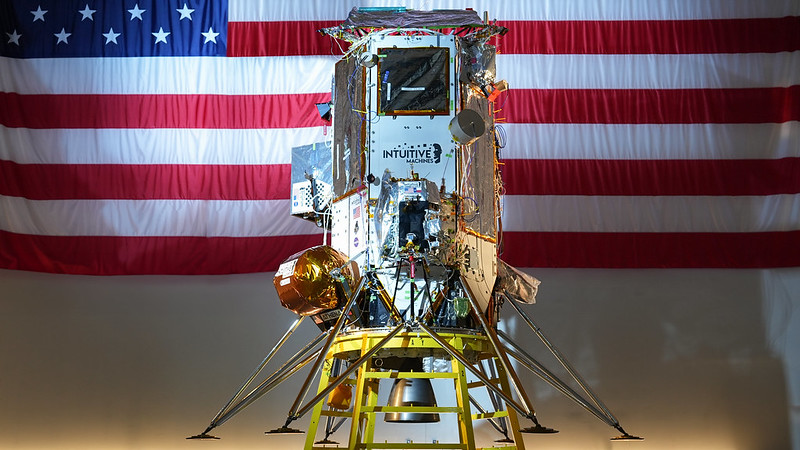AUI will present at the 247th meeting of the American Astronomical Society in Phoenix from January 4-8.
Recent News
ALMA Helps Unmask Monster Black Hole Behind Record-Breaking Cosmic Burst
Astronomers have used the Atacama Large Millimeter/submillimeter Array (ALMA) together with a suite of space- and ground-based telescopes, to study AT 2024wpp, the most luminous fast blue optical transient (LFBOT) ever observed.
Astronomers Make First Radio Detection of Rare Supernova Type, Revealing Secrets of Stellar Death
Astronomers using the U.S. National Science Foundation Very Large Array have captured the first-ever radio signals from a rare class of stellar explosion known as a Type Ibn supernova.
Space Company Taps Coast-to-Coast Radio Telescopes for Moon Mission

Intuitive Machines partners with NSF National Radio Astronomy Observatory, using 10 iconic U.S. telescopes from Hawaii to Virgin Islands to guide Nova-C lunar lander’s mission
The U.S. National Science Foundation National Radio Astronomy Observatory (NSF NRAO) is supporting Intuitive Machines’ second lunar mission, IM-2, which landed on the surface of the Moon, Thursday, March 6th.
Intuitive Machines has been working with the NSF NRAO over the past year to utilize the NSF Very Long Baseline Array (NSF VLBA) to support precise tracking and data downlink of Intuitive Machines’ Nova-C lunar lander, named Athena, during its mission to the Moon.
“The NRAO adds significant capability to Intuitive Machines’ Lunar Data Network,” said Intuitive Machines CEO Steve Altemus. “Using multiple, strategically located, world-class radio telescopes and ground stations enables our mission controllers to precisely track Athena through near-continuous, data-driven communications.”
The NSF NRAO will provide Intuitive Machines with access to its NSF VLBA network of radio telescopes, in ten locations across the United States, to receive data transmitted by the Nova-C lander during its journey to the Moon, while in lunar orbit, and after landing. The NSF GBT, the world’s largest fully steerable radio telescope, will also collect data. This mission support will improve the accuracy of the lander’s orbit determination through real-time or near-real-time position data.
“NRAO is excited to support Intuitive Machines in their second groundbreaking lunar mission,” said NSF NRAO assistant director Joe McMullin, who managed this project. “Our telescopes and expertise in radio astronomy will contribute to this mission’s success by providing accurate positional data and reliable communication links. NRAO recognizes the value in supporting commercial partnerships to advance space exploration and scientific discovery.”
About NRAO
The National Radio Astronomy Observatory (NRAO) is a facility of the National Science Foundation, operated under cooperative agreement by Associated Universities, Inc. NRAO designs, builds, and operates cutting-edge radio telescopes for use by scientists around the world.
This news article was originally published on the NRAO website on March 6, 2025.
Recent News
AUI to Attend AAS 247 Conference
AUI will present at the 247th meeting of the American Astronomical Society in Phoenix from January 4-8.
ALMA Helps Unmask Monster Black Hole Behind Record-Breaking Cosmic Burst
Astronomers have used the Atacama Large Millimeter/submillimeter Array (ALMA) together with a suite of space- and ground-based telescopes, to study AT 2024wpp, the most luminous fast blue optical transient (LFBOT) ever observed.
Astronomers Make First Radio Detection of Rare Supernova Type, Revealing Secrets of Stellar Death
Astronomers using the U.S. National Science Foundation Very Large Array have captured the first-ever radio signals from a rare class of stellar explosion known as a Type Ibn supernova.
